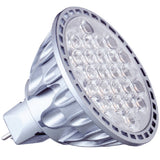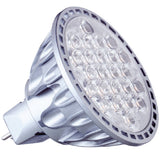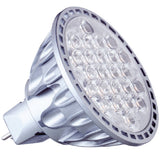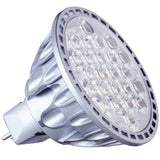LED Dimming: How to Ensure Smooth and Effective Light Output Control
Posted by Dave on for ProLampSales

Many LED lamps and fixtures on the market today include a dimming capability. While certainly a beneficial feature, often a necessary one, dimming LED lamps can be an adventure unless some basic steps are taken to ensure compatibility between the LED lamp and dimming control.
In the world of tungsten filament lighting (incandescent / halogen) virtually every light bulb operating on AC can be dimmed effectively by simply trimming the voltage. Lower voltage produces less light. Simple.
Dimming gets more complicated with fluorescent lighting where specially designed dimming ballasts must be paired with appropriate dimming control modules.
LED, a digital technology, has introduced a new set of challenges for effective dimming performance. First and foremost, the LED lamp or array must utilize an integrated or remote driver built to provide dimming when it is paired to a compatible dimmer control.
LED manufacturers have designed a number of strategies that allow dimmable LED lamps to work with common existing dimmers – sometimes with mixed success. In addition, dimmer control manufacturers have designed dimmers specifically for LED lighting – usually providing the best results.
Generally, any LED lamp on the market today that has a dimmable specification can be dimmed effectively assuming the buyer is aware of the compatibility requirements – normally, but not always, provided by the lamp manufacturer on the lamp specification sheet.
Symptoms of Dimmer Incompatibility with LED Lamps and Fixtures
First, let's look at some of the symptoms you may encounter when the dimmer and the LED lamp or fixture are not compatible.
Drop and Pop – When sliding the dimmer to a lower light output, the light may suddenly cut out altogether, or, when sliding the dimmer to get a higher light level, the light unexpectedly jumps to full brightness.
Gaps – When sliding the dimmer along the full range from highest light level to lowest, there are parts of the range where nothing happens when the dimmer slider is moved.
Ghosting – The dimmer slider is at the bottom of the dimming range which should be OFF, but there is a glimmer of light still coming from the lamp. Many LED lamp dimming specifications will indicate that you can dim the light output down to 10% of full brightness and then the lamp will go off. Ghosting may occur with lamp / dimmer incompatibility.
Flicker and Flash – When paired to a dimmer, the lamp produces pulsating bursts of light. This symptom is an obvious sign of incompatibility.
So how can you prevent these annoying problems in your application.
(1) Make sure the LED lamp or fixture specifications indicate it is dimmable.
(2) If you are pairing your LED lamp to an existing dimmer, see if that dimmer is on the dimmer compatibility list that the LED lamp manufacturer should provide.
(3) If you cannot locate a dimmer compatibility list, try to determine if the existing dimmer is "leading edge" or "trailing edge" type dimmer. These two types of dimmers modulate light level by altering the voltage at different phases of an alternating current's sine wave. Leading edge is by far the most common dimmer used with incandescent and halogen lamps. They are normally designed for higher wattage than the LED replacement lamp will have. When leading edge dimmers are used with LED, chances of encountering some of the symptoms above are high. Trailing edge dimmers are designed specifically for LED. They work with lower wattages and they are made to be digitally compatible with LED. You may need to replace your existing dimmer with a "trailing edge" type dimmer to get good dimming functionality.
(4) For commercial and institutional installations where multiple lamps and dimmers may be involved, it is always safest to purchase one or two units and test those with the existing dimmer control.
A Special Case – Dimming T8 LED Lamp Replacements in Existing Fluorescent Fixtures
0 – 10V dimming is a common control method for controlling fluorescent dimming ballasts. The control applies a voltage between 0 – 10 volts DC to produce different levels of light output.
LED replacements for fluorescent lamps generally are available either as "ballast compatible" or "ballast bypass" type technology.
Ballast compatible LED lamps can directly replace the existing fluorescent lamps. These LED lamps are designed to utilize the instant / programmed start ballast or the dimming ballast currently being used in the fixture. If the LED lamp specifications include dimming, the likely method is a 0 – 10V dimming controller.
Ballast bypass LED lamps (with an internal or external driver) can only be dimmed if the LED driver is dimmable.
In either case, check the compatible dimmer list that the LED lamp or fixture manufacturer should provide.
Always, the best strategy is to test the dimming effectiveness of a lamp / ballast / driver set-up before making a significant purchase.
Featured Products (View All)
- 0 Comments
- Posted in Controls, LED
0 Comments




